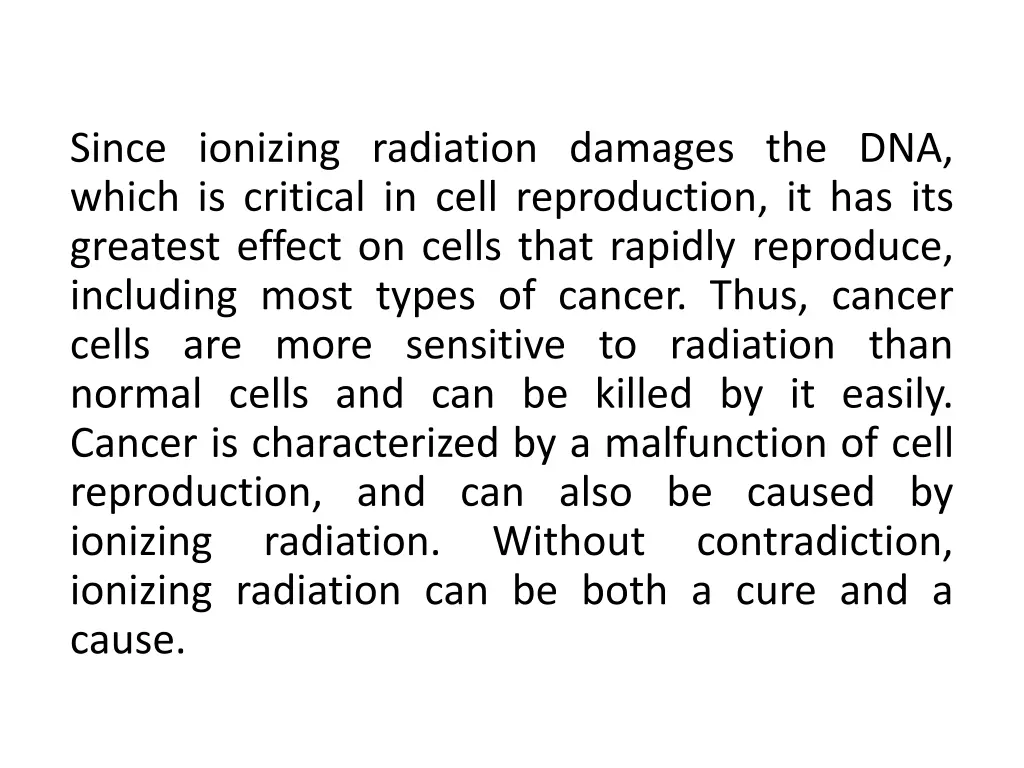
Understanding Ionizing Radiation Effects
Ionizing radiation, with its damaging effects on DNA, has a significant impact on cell reproduction and is particularly effective in targeting rapidly reproducing cancer cells. The biological effects of ionizing radiation are directly proportional to the dose in rads and depend on the type of radiation and tissue involved. Radiation dose units like the rad are defined based on the amount of ionization produced in biological organisms. Learn how radiation dose is calculated and its implications on health in this insightful discussion.
Download Presentation

Please find below an Image/Link to download the presentation.
The content on the website is provided AS IS for your information and personal use only. It may not be sold, licensed, or shared on other websites without obtaining consent from the author. If you encounter any issues during the download, it is possible that the publisher has removed the file from their server.
You are allowed to download the files provided on this website for personal or commercial use, subject to the condition that they are used lawfully. All files are the property of their respective owners.
The content on the website is provided AS IS for your information and personal use only. It may not be sold, licensed, or shared on other websites without obtaining consent from the author.
E N D
Presentation Transcript
Since ionizing radiation damages the DNA, which is critical in cell reproduction, it has its greatest effect on cells that rapidly reproduce, including most types of cancer. Thus, cancer cells are more sensitive to radiation than normal cells and can be killed by it easily. Cancer is characterized by a malfunction of cell reproduction, and can also be caused by ionizing radiation. Without ionizing radiation can be both a cure and a cause. contradiction,
The effects of ionizing radiation may be directly proportional to the dose in rads, but they also depend on the type of radiation and the type of tissue.
To discuss quantitatively the biological effects of ionizing radiation, we need a radiation dose unit that is directly related to those effects. All effects of radiation are assumed to be directly proportional to the amount of ionization produced in the biological organism.
The proportional to the amount of deposited energy. Therefore, we define a radiation dose unit called the rad, as 1|100 of a joule of ionizing energy deposited per kilogram of tissue, which is amount of ionization is in turn
For example, if a 50.0-kg person is exposed to ionizing radiation over her entire body and she absorbs 1.00 J, then her whole-body radiation dose is If the same 1.00 J of ionizing energy were absorbed in her 2.00-kg forearm alone, then the dose to the forearm would be






















